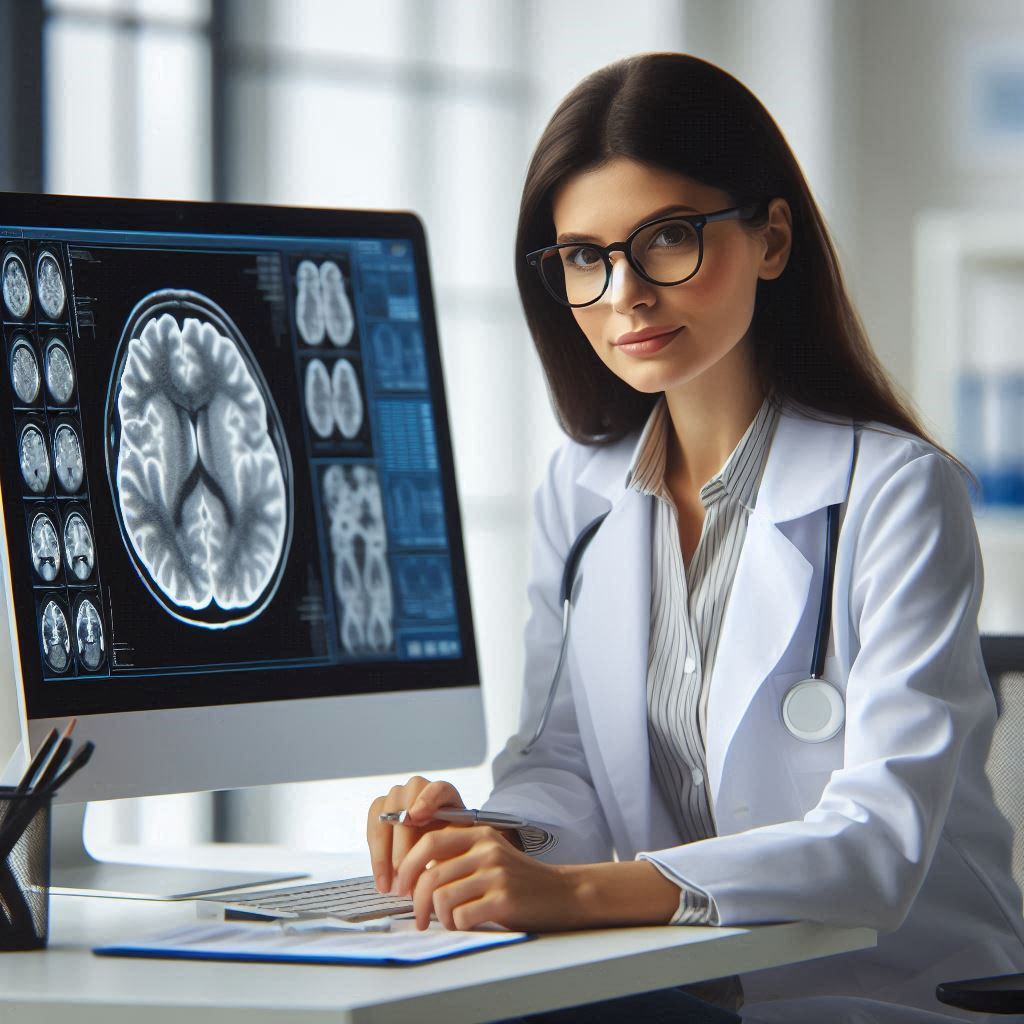Introduction
Technology has revolutionized neuroscience research in remarkable ways.
Advanced tools and techniques have enabled scientists to study the brain with unprecedented precision.
These innovations have transformed our understanding of neural circuits, brain function, and behavior.
Key technologies have significantly impacted the field.
For instance, functional magnetic resonance imaging (fMRI) allows researchers to visualize brain activity in real time.
Electrophysiology techniques enable scientists to record electrical activity from neurons, revealing critical insights into neural communication.
Additionally, optogenetics provides a means to control neuronal activity using light, allowing researchers to manipulate specific neural circuits.
Staying updated with new technological advancements in neuroscience research is crucial for researchers.
Rapid developments can lead to innovative methodologies and enhance experimental design.
Understanding emerging tools can improve research outcomes and facilitate collaborations across disciplines.
Moreover, keeping abreast of technological trends can inspire novel research questions and hypotheses.
As neuroscience continues to evolve, integrating cutting-edge technologies will be vital for pushing the boundaries of knowledge.
Technology has transformed neuroscience research, enhancing our ability to explore the brain.
By embracing and adapting to these advancements, researchers can drive meaningful progress in understanding the complexities of the nervous system.
Advanced Imaging Techniques
Role of Imaging Technologies in Neuroscience Research
Technologies such as fMRI, PET scans, and CT scans play crucial roles in neuroscience research.
Functional Magnetic Resonance Imaging (fMRI) measures brain activity by detecting changes in blood flow.
This technique provides real-time insights into brain function during various tasks.
Positron Emission Tomography (PET) scans utilize radioactive tracers to visualize metabolic processes in the brain.
Computed Tomography (CT) scans create detailed images of brain structures using X-rays.
Together, these imaging techniques offer comprehensive views of both brain structure and function.
Studying Brain Structure and Function
These imaging technologies have significantly advanced our understanding of brain structure and function.
fMRI allows researchers to explore neural correlates of cognitive processes.
It helps identify brain regions activated during memory, emotion, and decision-making tasks.
PET scans enable researchers to study the distribution of neurotransmitters, providing insights into brain chemistry.
CT scans facilitate the detection of structural abnormalities, such as tumors and lesions.
Using these techniques, researchers can examine brain connectivity and organization.
They study how different regions communicate during various activities.
This understanding is vital for diagnosing and treating neurological disorders.
Moreover, these technologies help scientists visualize the effects of diseases on brain structure.
For instance, they can observe how Alzheimer‘s disease alters brain function over time.
By analyzing these changes, researchers can develop better therapeutic interventions.
Groundbreaking Discoveries Enabled by Advanced Imaging
Advanced imaging technologies have led to numerous groundbreaking discoveries in neuroscience.
For example, fMRI studies revealed the default mode network, a brain network active during rest.
This discovery transformed our understanding of how the brain processes information during passive states.
PET scans contributed to the discovery of amyloid plaques in Alzheimer‘s disease patients.
Identifying these plaques has improved early diagnosis and treatment strategies.
Researchers have also utilized fMRI to understand brain activity patterns in psychiatric disorders.
One notable study used fMRI to reveal how the brain processes social interactions.
Researchers discovered distinct neural pathways involved in empathy and moral decision-making.
This finding opened new avenues for understanding social cognition and behavior.
CT scans have enabled researchers to study traumatic brain injuries more effectively.
They have helped identify structural damage and predict recovery outcomes.
Imaging technologies like fMRI, PET scans, and CT scans are transforming neuroscience research.
They provide valuable insights into brain structure and function, enhancing our understanding of complex neural processes.
Groundbreaking discoveries enabled by these technologies continue to advance our knowledge of the brain.
As research progresses, these imaging techniques will undoubtedly lead to further innovations and discoveries in neuroscience.
These advancements hold great promise for improving diagnoses and treatments of neurological disorders.
Read: Key Roles and Responsibilities of a Chemist in the US
Optogenetics
Understanding Optogenetics
Optogenetics is a revolutionary technology transforming neuroscience research.
It enables researchers to manipulate neuronal activity using light.
This innovative technique combines genetics and optics, providing precise control over specific neurons.
Scientists can introduce light-sensitive proteins into targeted neurons, allowing them to respond to light stimuli.
By shining light of specific wavelengths, researchers can activate or inhibit neuronal activity.
This ability to control neurons with light offers unprecedented insights into brain function.
Optogenetics allows scientists to explore how neural circuits influence behavior and cognition.
Controlling Neural Activity with Light
Optogenetics empowers researchers to control neural activity with remarkable precision.
Traditional methods for studying brain function often involve electrical stimulation.
However, these methods lack the specificity that optogenetics provides.
Researchers can selectively target particular neuron types and pathways, enhancing experimental accuracy.
By using various wavelengths of light, scientists can turn neurons on or off.
For instance, blue light can activate excitatory neurons, while yellow light can inhibit them.
This level of control allows researchers to study the dynamics of neural circuits in real time.
The ability to modulate neural activity in living organisms has profound implications.
Researchers can observe how changes in neural activity affect behavior.
This insight helps to unravel the complexities of neural communication.
Applications in Studying Neural Circuits and Behavior
Optogenetics has numerous applications in studying neural circuits and behavior.
Researchers use this technology to investigate how specific neural pathways influence different behaviors.
For example, optogenetics has been applied to study movement, fear, and social interactions in animal models.
In one notable study, scientists used optogenetics to explore fear responses in mice.
By activating specific neurons in the amygdala, they could induce fear-related behaviors.
This research has implications for understanding anxiety and stress disorders.
Additionally, optogenetics helps researchers dissect the intricacies of brain circuits involved in decision-making.
By manipulating neural activity, scientists can observe how decisions are made.
This approach provides insights into the neural basis of cognition and learning.
Moreover, optogenetics is valuable in developing potential therapies for neurological disorders.
Researchers are investigating its applications in conditions like Parkinson‘s disease and epilepsy.
By targeting dysfunctional circuits, optogenetics may offer new treatment strategies.
Optogenetics is a transformative technology in neuroscience research.
It allows precise control of neural activity with light, enabling groundbreaking discoveries.
The applications of optogenetics in studying neural circuits and behavior are vast and promising.
As researchers continue to harness this powerful tool, they will deepen our understanding of the brain‘s complexities.
Optogenetics will undoubtedly play a pivotal role in advancing neuroscience in the coming years.
Read: Earning Potential: Chemist Salaries Across US States
Brain-Computer Interfaces (BCIs)
Overview of BCIs
BCIs function by translating brain activity into commands for computers or devices.
Researchers use various methods to record brain signals, including electroencephalography (EEG) and invasive electrodes.
Non-invasive methods are safer but often provide less detailed data.
The core principle of BCIs is to interpret electrical signals generated by neuronal activity.
This interpretation allows users to control devices with their thoughts.
BCIs have gained popularity in both clinical and research settings.
They enable scientists to study brain dynamics and explore neurological disorders.
Communication with Paralyzed Individuals
BCIs have significantly advanced communication for individuals with paralysis.
These systems decode brain signals associated with movement intentions.
Users can control computer cursors or communication devices using only their thoughts.
For example, researchers at the University of California, Berkeley, developed a BCI that allows paralyzed individuals to type.
Participants focused on specific letters on a screen, and the BCI interpreted their brain signals.
This technology has enabled meaningful communication for individuals previously unable to express themselves.
BCIs not only improve communication but also empower users.
They provide individuals with a sense of agency, enhancing their quality of life.
The psychological benefits of re-establishing communication cannot be overstated.
Future Prospects of BCIs
The future of BCIs holds immense promise in cognitive neuroscience and neuroprosthetics.
Ongoing research aims to refine BCI technologies for more accurate signal decoding.
Advances in machine learning will enhance the capability of BCIs to interpret complex brain signals.
In neuroprosthetics, BCIs can restore movement for individuals with spinal cord injuries.
Researchers are developing prosthetic limbs that users can control through thought alone.
These technologies may offer greater independence and improved quality of life.
Moreover, BCIs can deepen our understanding of cognitive processes.
Researchers can investigate how the brain processes information and executes decisions.
This knowledge can inform treatments for neurological disorders such as ALS and multiple sclerosis.
Additionally, the integration of BCIs with virtual and augmented reality presents exciting possibilities.
Users could engage in immersive environments, enhancing rehabilitation efforts and cognitive training.
This convergence of technologies could reshape how we approach neurological rehabilitation.
Brain-Computer Interfaces are transforming neuroscience research and clinical applications.
By enabling communication for paralyzed individuals, BCIs improve lives significantly.
The future prospects of BCIs in cognitive neuroscience and neuroprosthetics are vast.
As researchers continue to innovate, BCIs will play a pivotal role in understanding and enhancing brain function.
Read: Top Chemistry Departments and Schools in the US

Single-cell Sequencing
Explanation of Single-Cell Sequencing Technology
Single-cell sequencing is a revolutionary technology in neuroscience research.
It allows scientists to analyze the genetic material of individual cells.
This method provides insights into cellular heterogeneity within complex tissues.
Traditional sequencing techniques average signals from many cells, obscuring individual cell differences.
Single-cell sequencing overcomes this limitation by isolating and examining each cell’s genetic makeup.
This approach is crucial for understanding the intricate workings of the brain.
The significance of single-cell sequencing in neuroscience research is profound.
It enables researchers to explore the diverse cell types within the brain.
This technology helps identify specific genes that contribute to neuronal function and identity.
By understanding these differences, scientists can uncover the underlying mechanisms of brain disorders.
Single-cell sequencing also aids in tracking cellular responses to various stimuli or treatments.
Studying Individual Neurons at a Molecular Level
Single-cell sequencing allows researchers to study individual neurons at a molecular level.
This capability reveals the unique expression profiles of each neuron type.
Scientists can observe how specific genes influence neuron behavior and function.
For instance, they can identify which genes are activated during learning or memory processes.
Moreover, single-cell sequencing can highlight how neurons communicate with each other.
By examining the gene expression patterns, researchers can infer signaling pathways.
Understanding these pathways is crucial for uncovering how neurons interact within circuits.
This detailed analysis helps scientists comprehend how individual neurons contribute to overall brain function.
Advancements in Understanding Brain Cell Diversity and Function
Single-cell sequencing has advanced our understanding of brain cell diversity and function.
Researchers have discovered previously unknown neuron types and their roles in the brain.
For example, studies have identified distinct subtypes of inhibitory and excitatory neurons.
These findings help clarify how different neuron types contribute to brain networks.
Additionally, single-cell sequencing has provided insights into neurodevelopmental processes.
Researchers can now track how neuronal diversity arises during brain development.
This knowledge is essential for understanding developmental disorders like autism and schizophrenia.
By mapping the origins of specific neuron types, scientists can better comprehend these complex conditions.
Furthermore, single-cell sequencing has illuminated the effects of environmental factors on brain cells.
Researchers have examined how stress, diet, and exposure to toxins influence gene expression.
These studies reveal how external factors can shape neuronal function and health.
Single-cell sequencing technology is transforming neuroscience research.
It allows for detailed studies of individual neurons at a molecular level.
By advancing our understanding of brain cell diversity, scientists can uncover fundamental mechanisms of brain function.
As this technology continues to evolve, it promises to reveal even more about the complexities of the brain.
This knowledge will ultimately enhance our ability to address neurological disorders and improve mental health outcomes.
Read: How to Become a Licensed Chemist in the USA: Steps and Tips
Artificial Intelligence (AI) in Neuroscience
The Role of AI in Analyzing Neuroscience Data
Artificial Intelligence (AI) plays a crucial role in analyzing vast amounts of neuroscience data.
Modern neuroscience generates enormous data sets from various sources, including brain imaging and electrophysiological recordings.
Traditional data analysis methods often struggle to keep up with this growing volume of information.
AI algorithms efficiently process and analyze complex data, uncovering insights that researchers might miss.
Researchers increasingly rely on machine learning algorithms to enhance their studies.
These algorithms can handle intricate data structures and identify subtle patterns in brain activity.
AI transforms how scientists interpret data, leading to faster and more accurate results.
With AI, researchers can focus on interpreting findings rather than spending excessive time on data processing.
Identifying Patterns and Relationships in Brain Activity
AI algorithms excel at identifying patterns and relationships in brain activity.
They analyze data from various modalities, including fMRI, EEG, and behavioral assessments.
By comparing multiple data sources, AI can reveal how different brain regions communicate.
This capability helps researchers understand the neural basis of cognitive functions.
For instance, researchers have used AI to study patterns associated with neurological disorders.
AI algorithms can detect anomalies in brain activity linked to conditions like Alzheimer‘s and Parkinson‘s disease.
Identifying these patterns early can lead to timely interventions and improved patient outcomes.
Furthermore, AI enables the integration of longitudinal data from multiple studies.
This integration creates comprehensive datasets that enhance statistical power.
As a result, researchers can draw more robust conclusions about brain function and connectivity.
AI‘s ability to identify relationships across different datasets is revolutionizing neuroscience research.
Implications of AI on Future Neuroscience Research
The implications of AI on future neuroscience research are profound.
AI technology will likely lead to significant breakthroughs in understanding the brain.
As algorithms become more sophisticated, researchers can expect enhanced predictive modeling.
This modeling could improve our ability to forecast disease progression and treatment responses.
Moreover, AI has the potential to streamline the research process.
Automated data collection and analysis reduce the time needed for experiments.
This efficiency allows researchers to explore more questions and hypotheses simultaneously.
Collaboration between neuroscientists and AI experts will be essential for maximizing this potential.
Interdisciplinary teams can develop tailored algorithms that address specific neuroscience challenges.
Such collaborations can lead to innovative approaches that push the boundaries of current research.
In short, AI is transforming neuroscience research by analyzing vast amounts of data efficiently.
Its ability to identify patterns and relationships in brain activity enhances our understanding of neural processes.
The implications of AI for future neuroscience research are vast, promising significant breakthroughs and improved methodologies.
As AI technology continues to evolve, it will reshape the landscape of neuroscience and deepen our understanding of the brain’s complexities.
Transform Your Career Today
Unlock a personalized career strategy that drives real results. Get tailored advice and a roadmap designed just for you.
Start NowSee Related Content: Weather Reporting: Ethics and Accuracy in Journalism
Discover More: Role of Machine Learning in Bioinformatics
Neuroimaging Technologies
Overview of Emerging Neuroimaging Technologies
Neuroimaging technologies play a vital role in advancing neuroscience research.
Among these, diffusion tensor imaging (DTI) and magnetoencephalography (MEG) have emerged as powerful tools.
DTI uses magnetic resonance imaging to visualize white matter tracts in the brain.
This technology allows researchers to study the connectivity between different brain regions.
On the other hand, MEG measures the magnetic fields generated by neuronal activity.
This technique provides high temporal resolution, capturing brain dynamics in real time.
Together, DTI and MEG offer complementary perspectives on brain structure and function.
They help researchers explore complex networks involved in cognition, emotion, and behavior.
Insights into Brain Connectivity and Dynamics
These neuroimaging technologies provide groundbreaking insights into brain connectivity.
DTI reveals how different brain regions communicate through white matter pathways.
This information is crucial for understanding the organization of the brain’s wiring.
MEG, with its excellent temporal resolution, allows researchers to track brain activity as it occurs.
This capability is invaluable for studying dynamic processes, such as sensory perception and decision-making.
By combining DTI and MEG, scientists can analyze how structural connectivity influences functional dynamics.
Understanding brain connectivity and dynamics is essential for various research areas.
For instance, it helps investigate how brain networks adapt during learning and recovery from injury.
These insights contribute to our understanding of both healthy and impaired brain function.
Studies Investigating Neurological Disorders
Numerous studies have employed DTI and MEG to investigate neurological disorders.
For example, researchers used DTI to examine white matter integrity in patients with multiple sclerosis (MS).
Their findings revealed significant disruptions in brain connectivity associated with the disease’s progression.
Another study utilized MEG to explore the brain activity of patients with epilepsy.
Researchers identified abnormal oscillatory patterns that correlate with seizure onset.
This information can guide personalized treatment plans for individuals with epilepsy.
Additionally, researchers have studied autism spectrum disorder (ASD) using both DTI and MEG.
DTI studies have revealed altered white matter connectivity in individuals with ASD.
MEG research has demonstrated atypical brain activity patterns during social processing tasks.
These examples illustrate how neuroimaging technologies enhance our understanding of neurological disorders.
They help identify biomarkers, track disease progression, and inform treatment strategies.
As these technologies advance, they hold promise for improving diagnostic accuracy and treatment efficacy.
Emerging neuroimaging technologies like DTI and MEG are transforming neuroscience research.
They provide new insights into brain connectivity and dynamics, enhancing our understanding of complex neural processes.
Studies using these technologies have significantly contributed to our knowledge of neurological disorders.
By uncovering the intricacies of brain structure and function, these tools pave the way for innovative approaches to diagnosis and treatment.
As neuroscience continues to evolve, these technologies will play a crucial role in unraveling the mysteries of the brain.
Find Out More: Impact of Biomedical Engineers on Healthcare
Miniature Microscopy
Explanation of Miniature Microscopy and Its Applications in Neuroscience Research
Miniature microscopy is revolutionizing neuroscience research.
This technology enables researchers to observe brain activity in unprecedented detail.
By utilizing tiny, lightweight microscopes, scientists can study living organisms without invasive procedures.
These devices provide real-time insights into neural processes.
Miniature microscopes are often attached to animal models, such as mice or fruit flies.
This setup allows researchers to monitor neuronal activity during behavior.
Scientists can study various aspects of brain function, including memory, learning, and sensory processing.
As a result, miniature microscopy offers a powerful tool for understanding complex neural networks.
Observing Brain Activity in Real-Time at a Cellular Level
Miniature microscopes enable researchers to observe brain activity in real-time.
They use fluorescence imaging to visualize individual neurons and their connections.
Researchers can monitor changes in calcium levels, indicating neuronal activity.
This approach provides dynamic insights into how neurons communicate and process information.
Real-time observation helps researchers connect cellular activity to behavior.
For example, scientists can study how specific neuronal circuits contribute to decision-making.
This understanding can lead to breakthroughs in treating neurological disorders.
By linking cellular behavior to larger brain functions, researchers gain valuable knowledge about brain health.
Advantages of Using Miniature Microscopy in Studying Neural Processes and Brain Function
Using miniature microscopy in neuroscience research offers several advantages.
First, it allows for non-invasive observations of living organisms.
Researchers can monitor neural activity without disrupting natural behaviors.
This feature enhances the ecological validity of experimental findings.
Second, miniature microscopy provides high spatial and temporal resolution.
Researchers can observe rapid changes in neuronal activity, enabling them to study dynamic processes.
This capability is essential for understanding how the brain encodes and retrieves information.
Third, miniature microscopes can be used in various experimental settings.
Scientists can apply this technology in freely moving animals or under different environmental conditions.
This flexibility allows for diverse applications in studying neural processes, including memory formation, sensory perception, and motor control.
Moreover, miniature microscopy fosters interdisciplinary collaboration.
Researchers from different fields can work together to explore complex questions about brain function.
This collaboration can lead to innovative approaches and technologies in neuroscience.
In summary, miniature microscopy is transforming neuroscience research.
It allows researchers to observe brain activity in real-time at the cellular level.
By using this technology, scientists can study neural processes and brain function in a non-invasive and dynamic manner.
The advantages of miniature microscopy promise to enhance our understanding of the brain and inform future treatments for neurological disorders.
Conclusion
We recapped how various technologies are transforming neuroscience research.
Advances in neuroimaging, such as fMRI and PET scans, provide detailed brain activity insights.
Additionally, optogenetics allows researchers to control neural activity using light, offering unprecedented precision in studying brain functions.
Machine learning algorithms help analyze vast datasets, revealing patterns in brain behavior that were previously undetectable.
Leveraging new technologies is crucial to further understanding the complexities of the brain.
These tools enable researchers to explore neural circuits and interactions more comprehensively.
By employing cutting-edge techniques, scientists can address longstanding questions about cognition, memory, and behavior.
This understanding can lead to breakthroughs in treating neurological disorders and mental health conditions.
We call on researchers to explore and adopt innovative technologies in their neuroscience studies.
Staying informed about emerging tools and methods is essential for advancing research.
Collaborating with engineers and technologists can facilitate the integration of new technologies into your work.
Attend workshops and conferences to learn about the latest advancements in the field.
Embrace the potential of technology to drive neuroscience research forward.
By utilizing these transformative tools, we can unlock the mysteries of the brain and improve outcomes for individuals affected by neurological conditions.
Together, let‘s advance neuroscience to new heights.
[E-Books for Sale]
The Big Book of 500 High-Paying Jobs in America: Unlock Your Earning Potential
$19.99 • 500 High-Paying Jobs • 330 pages
Explore 500 high-paying jobs in America and learn how to boost your career, earn more, and achieve success!
See All 500 High-Paying Jobs of this E-Book
1001 Professions Without a Degree: High-Paying American Jobs You Can Start Now
$19.99 • 1001 Professions Without a Degree • 174 pages
Discover 1001 high-paying jobs without a degree! Unlock career tips, skills, and success strategies for just $19.99!




